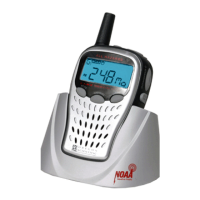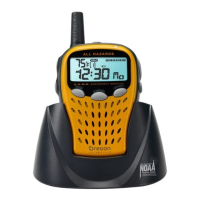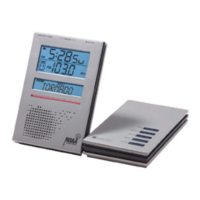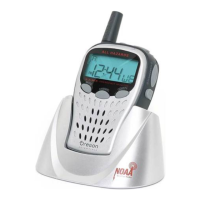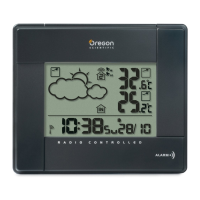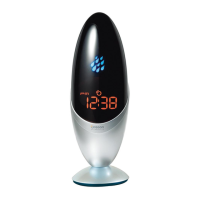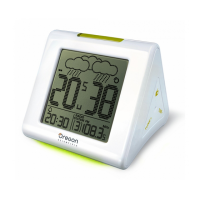Do you have a question about the Oregon Scientific WR601N and is the answer not in the manual?
Details buttons and indicators on the front of the device.
Explains UP/DOWN volume buttons and NOAA button.
Instructions for inserting AA batteries into the device.
Explains NOAA ON, Standby, Mute, and OFF modes.
How the system alerts users to environmental dangers.
Explains Specific Area Message Encoding (SAME) codes.
Where to find necessary codes for regional alerts.
Steps to enter specific SAME codes for regional alerts.
How to set the unit to receive all or specific local alerts.
Step-by-step guide to entering county codes.
Guide to setting the time, date, and day of the week.
Instructions for setting alarm 1 and alarm 2.
Explanation of the EAS and its compatibility with NOAA.
| Radio type | Portable |
|---|---|
| Tuner type | Digital |
| PLL synthesizer | Yes |
| Supported radio bands | PLL |
| RMS rated power | - W |
| Number of built-in speakers | 1 |
| Backlight | No |
| Display type | LCD |
| Display number of colors | Monochrome |
| Headphone outputs | 0 |
| USB 2.0 ports quantity | USB 2.0 ports have a data transmission speed of 480 Mbps, and are backwards compatible with USB 1.1 ports. You can connect all kinds of peripheral devices to them. |
| Product color | Black, Yellow |
| Input voltage | 7.5 V |
| Power requirements | 350mA |
| Apple docking compatibility | Not supported |
| Battery voltage | 1.5 V |
| Battery technology | Alkaline |
| Compatible battery sizes | AA |
| Number of batteries supported | 3 |
| Operating temperature (T-T) | -5 - 50 °C |
| Depth | 35 mm |
|---|---|
| Width | 74 mm |
| Height | 137 mm |
| Weight | 131 g |


